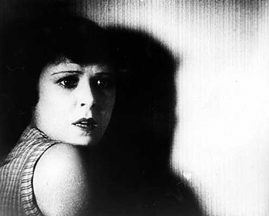
Dark Fantasy
Part I
The connections to Expressionism and Surrealism are solid enough. The bridge from these European art movements to the Dark Energy movies was built and maintained by practitioners such as Fritz Lang and Luis Buñuel.* Different people have different needs when it comes to this reality/fantasy mix. There are those who see escapism as an essential part of entertainment; to some, the function of entertainment is to remove us from the burdens of concrete reality altogether, if only for a short period of time. And there are others who become irritated when what they see on the screen or on the pages of a book doesn't correspond closely to the reality that guides them in their daily lives. Most individuals fall somewhere in between, inclining by various degrees to this side or that.
What they were good at was catching a certain darkness of the soul that their readers recognized as reality based, and film noir has thrived not so much because of its classics, Double Indemnity, The Asphalt Jungle, Chinatown, Pulp Fiction - though, for sure that doesn't do any harm - but because there seems to be an inexhaustible supply of minor movies that hit the right note: Crime Wave, Tension, Decoy, Armored Car Robbery, The Blue Gardenia, The Killer is Loose... For some viewers the looseness of second-tier noir is prohibitive. "Why the hell didn't she just pick up the phone and call the cops?" etc. For others plot is just a device - a MacGuffin as Hitchcock called it - that gives the characters something to do while the directors, the cinematographers, the actors get on with what matters most: the ambience, the blues, the zeitgeist. (To be continued.)
|
 The
fantasy level in Dark Energy is quite high, but taken
as a whole this group of movies holds
a subjective view of reality as opposed to being escapist. Admittedly Babe:
Pig in the City and Cocteau's Beauty and the Beast stretch
this claim beyond generally accepted borders, but I believe they
have
their
The
fantasy level in Dark Energy is quite high, but taken
as a whole this group of movies holds
a subjective view of reality as opposed to being escapist. Admittedly Babe:
Pig in the City and Cocteau's Beauty and the Beast stretch
this claim beyond generally accepted borders, but I believe they
have
their  Noir
(including neo-noir) tends to feel like reality - the grittiness
meshes pretty
well with a long
tradition of news stories that deal with crime, whether it's organized
(The Phenix City Story) or of a more personal nature (Body
Heat). But all in all, noir tends to operate in a reality of
its own making. Most noir plots don't stand up to close scrutiny.
Pulp writers like
Noir
(including neo-noir) tends to feel like reality - the grittiness
meshes pretty
well with a long
tradition of news stories that deal with crime, whether it's organized
(The Phenix City Story) or of a more personal nature (Body
Heat). But all in all, noir tends to operate in a reality of
its own making. Most noir plots don't stand up to close scrutiny.
Pulp writers like 